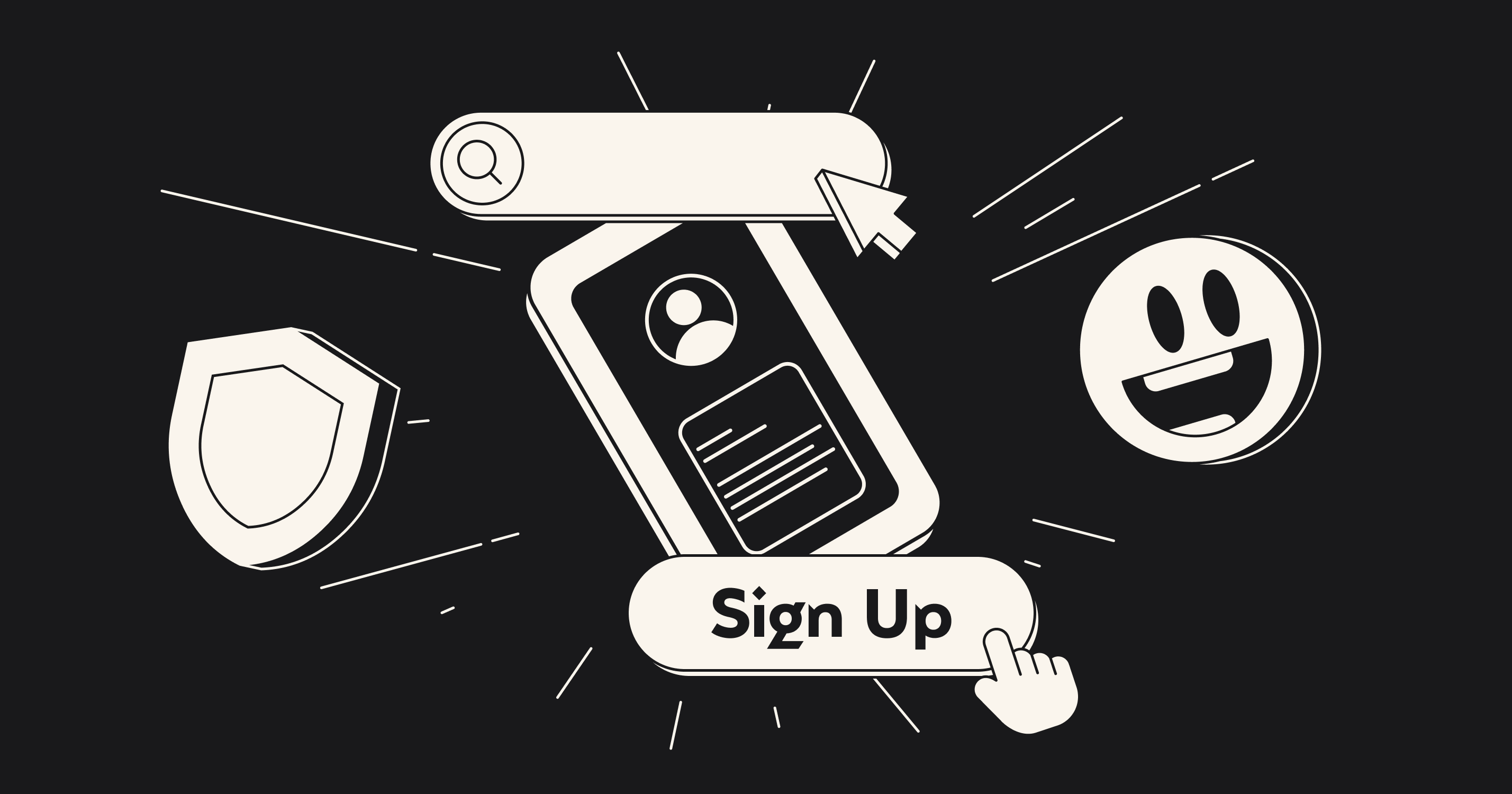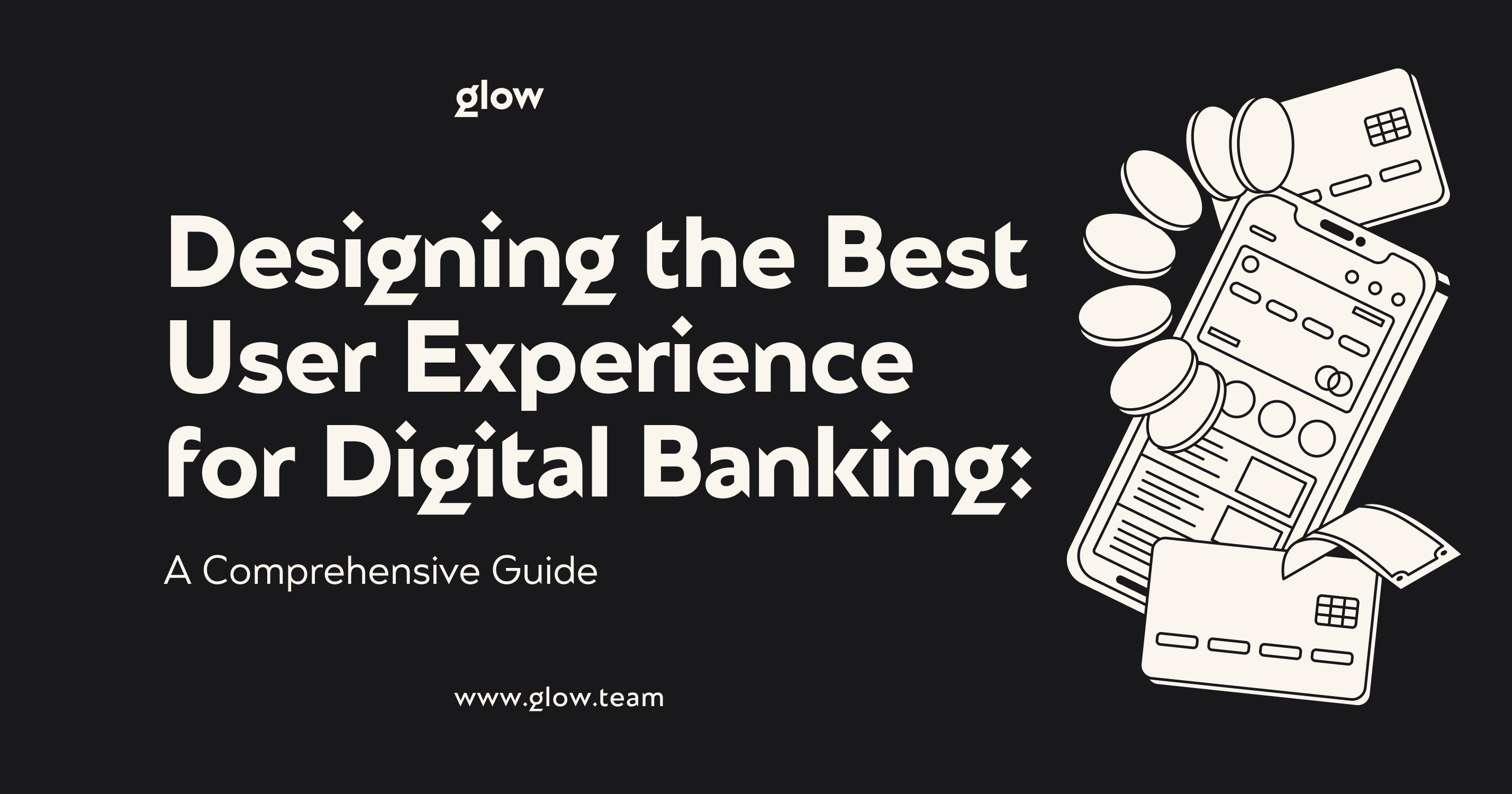Introduction
Imagine a world where managing your finances is as easy as ordering your favorite meal online. Welcome to the future of digital banking!
Banks strive to provide a seamless, intuitive, and secure online experience in today's landscape. But what makes a digital banking platform truly exceptional? How can financial institutions find the perfect balance between functionality and usability?
The Glow team will explore the art and science of creating outstanding digital banking services in this in-depth guide. From optimizing complex processes to leveraging cutting-edge technology. We know the strategies that turn ordinary banking apps into powerful financial companions.
Understanding User Experience in Digital Banking

The Importance of UX in Financial Services
Banking UX plays a vital role in customer satisfaction and retention. A well-designed digital banking platform can significantly impact a bank's success. It's not just about flashy features; it's about creating intuitive, efficient, and enjoyable user experiences.
Good UX in digital banking leads to:
- Increased customer engagement
- Higher adoption rates of digital services
- Reduced operational costs
- Improved customer loyalty
- Enhanced brand reputation
Common UX Challenges in Digital Banking
Despite its importance, many banks struggle with creating optimal digital experiences. Some common challenges include:
- Complex financial jargon
- Overwhelming number of features and options
- Concerns about security and privacy
- Difficulty in navigating between different banking services
- Lack of personalization
- Inconsistent experiences across devices
Addressing these challenges is crucial for banks aiming to improve their digital banking user experience.
Best Practices for Improving Digital Banking UX

Streamlining Onboarding and Navigation
First impressions matter. A smooth onboarding process sets the tone for the entire banking experience. Here are some tips:
- Simplify account creation with minimal data entry
- Use progressive disclosure to gradually introduce features
- Implement clear and consistent navigation menus
- Provide a search function for quick access to specific services
- Use visual cues and icons to guide users through processes
Balancing Security and User-Friendliness
Security is paramount in banking, but it shouldn't come at the cost of usability. Striking the right balance is key:
- Implement biometric authentication for quick and secure logins
- Use two-factor authentication without making it cumbersome
- Clearly communicate security measures to build trust
- Provide options for customizing security settings
- Use visual feedback to confirm secure actions
Implementing Personalization and Emotional Design
Personalization can transform a generic banking UX design into a tailored experience:
- Use data analytics to offer personalized financial insights
- Allow customization of dashboards and quick access features
- Implement smart notifications for relevant offers and reminders
- Use conversational interfaces for a more human touch
- Incorporate positive reinforcement for good financial habits
Innovative Strategies and Future Trends

Leveraging AI, Voice Interfaces, and Data Visualization
The future of mobile banking UX lies in embracing cutting-edge technologies:
- AI-powered chatbots for 24/7 customer support
- Voice-activated banking for hands-free transactions
- Advanced data visualization for better financial management
- Predictive analytics for proactive financial advice
- Machine learning for fraud detection and prevention
Open Banking, AR/VR, and Blockchain Integration
Forward-thinking banks are exploring new frontiers in digital banking:
- Open banking APIs for seamless third-party integrations
- Augmented reality for interactive financial education
- Virtual reality for immersive banking experiences
- Blockchain for secure and transparent transactions
- Gamification elements to encourage financial literacy
Measuring and Optimizing Digital Banking UX

Key Performance Indicators and User Testing
To improve, you must measure. Key metrics for banking UX include:
- User engagement rates
- Task completion times
- Error rates
- Customer satisfaction scores
- Net Promoter Score (NPS)
Regular user testing is crucial. Conduct:
- Usability tests
- A/B testing
- Customer surveys
- Analytics reviews
- Heat map analysis
Impact on Customer Retention and Bank Success
Investing in UX pays off. Banks with superior digital experiences report:
- Higher customer retention rates
- Increased cross-selling opportunities
- Lower customer acquisition costs
- Better brand perception
- Competitive advantage in the market
Case Studies: Successful Digital Banking UX Transformations

Let's look at some real-world examples of banks that have revolutionized their digital UX:
1. Bank of America's AI-powered assistant, Erica
- Provides personalized financial guidance
- Handles over 15 million customer interactions per month
- Resulted in a 19% increase in mobile banking engagement
2. BBVA's award-winning mobile app
- Offers a unified experience across all devices
- Includes features like financial health scores and budgeting tools
- Led to a 92% increase in mobile banking sales
3. Capital One's redesigned mobile app
- Focuses on simplicity and ease of use
- Incorporates machine learning for fraud detection
- Achieved a 4.8-star rating on app stores
These success stories demonstrate the power of prioritizing mobile banking UX in digital transformation efforts.
Conclusion: Embracing UX as a Core Strategy in Digital Banking

In the competitive digital banking world, user experience is no longer a luxury—it's a necessity. Banks that prioritize banking UX design will thrive in the digital age. Here are the key takeaways:
- Understand your users' needs and pain points
- Streamline processes while maintaining robust security
- Personalize experiences using data and AI
- Stay ahead of the curve with innovative technologies
- Continuously measure and optimize your UX
By following these principles, banks can create digital experiences that meet and exceed customer expectations. The future of banking is digital, and the key to success lies in creating exceptional user experiences that make managing finances easy, engaging, and enjoyable.
Remember, great user experience banking is an ongoing journey. It requires constant iteration, innovation, and a deep commitment to putting the customer first. Banks that embrace this philosophy will survive and thrive in the digital revolution.







